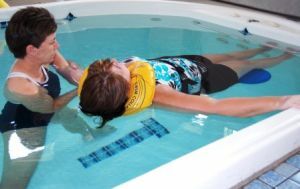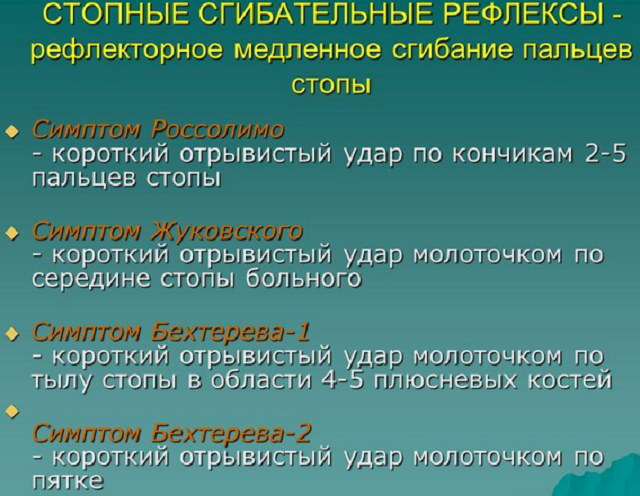 For all multicellular organisms, the obligatory condition of vital activity is the presence of the central nervous system. It is due to its presence in all living beings and humans that it becomes possible to react with certain movements to various stimuli. Movements of this origin are called reflexes.
For all multicellular organisms, the obligatory condition of vital activity is the presence of the central nervous system. It is due to its presence in all living beings and humans that it becomes possible to react with certain movements to various stimuli. Movements of this origin are called reflexes.
Even a newborn child already has some reflexes, which must necessarily be manifested in certain situations.
The presence of reflexes, their strength and intensity in the first place indicate the state of the nervous system. In the absence of specific reactions, specialists have the right to presume the presence of a neurological disease.
To the number of pathological reflexes carry the Babinsky symptom. It can be diagnosed in infancy, which in turn allows one to assert about the course of upper motor neuron syndrome.
With timely diagnosis and competent treatment, the chances to get rid of the manifestation of unpleasant signs of the disease are significantly increased, which allows the patient to continue to lead a healthy lifestyle.
Contents
- Concept of pathological reflexes in neurology
- Diagnosis in neurology
- Reflex of Babinsky
- What does this pathology mean?
- Reflex study in children and newborns
- Study of the symptom in adults
- Diagnosis features
Concept of pathological reflexes in neurology
In neurology, reflex refers to the body's response to an irritation localized in a reflex zone that comes from outside. The presence of reflexes makes it possible to judge the state of health of certain parts of the central nervous system of man.
Conducted studies of reflexes are reduced to establishing their uniformity, character, symmetry, frequency and 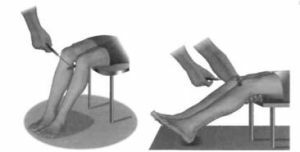 intensity.
intensity.
With the normal development of the human body, reflexes at different life stages arise and disappear on their own. They are divided into conditional( which are acquired during life) and unconditional( which are present since birth).
In the absence of congenital reflexes is understood the presence and development of a particular disease, which in most cases is referred to as a neurological area.
Pathological refers to those reflexes that are manifested as a result of the defeat of the main neuron, which is localized in the structure of the brain, neural pathways and nuclei of the cranial nerves. These structures are responsible for the correctness and consistency of motor acts.
Any damage to these structures leads to the fact that the body produces not quite familiar reactions, in the form of various movements. Usually such reactions are considered not normal, because they are quite different from the reflex reactions of a healthy person.
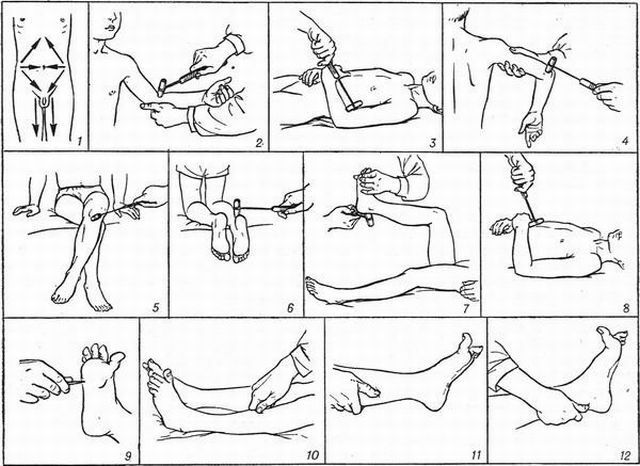
Diagnosis in neurology
To establish a competent diagnosis, the specialist should pay special attention to such issues:
- Careful collection of anamnesis of the patient and members of his family( genetic predisposition to neurological pathologies is important).
- Clinical laboratory blood tests.
- Carrying out all necessary medical examinations.
- Diagnosis of abnormalities in the central and peripheral nervous system.
Diagnosis of abnormalities in the nervous system can also be performed using the following methods:
- Electromyography .During the procedure, the neuromuscular synapse, as well as primary and secondary myopathies, is studied. Both the facial nerves and the extremities of the upper and lower extremities are examined.
- Procedure for studying nerve conduction .It allows to estimate the speed of impulse conductivity between motor fibers and stimulating points. In the event that the results show low figures, the doctor may presume the development of demyelination.
- Method of electroencephalography .Most often recommended for the study of epileptic seizures. In some cases, it is used to confirm the presence of human cerebral cortex lesions, and various somatic pathologies.
- Lumbar puncture .
- Magnetic resonance imaging and computed tomography .
For the diagnosis of the Babinsky reflex in newborn infants, no medical equipment is needed. To confirm the diagnosis, the neurologist will have enough hammer, which he will carry out from the outside of the sole. At the same time, a slow extension of the thumb should occur( the rest at this moment must remain stationary).
Babinsky Reflex
Babinski's symptom is the manifestation of a pathological reflex, which consists in unbending the thumb on the foot in any contact with the sole.
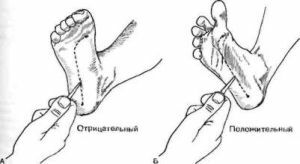 This reflex was named after the famous French scientist neuropathologist J. Babinsky. It was he who studied the pathology carefully and in the course of his studies concluded that this symptom proves a decrease in the sensitivity of the cerebral cortex to the response of the anterior neurons of the spinal cord.
This reflex was named after the famous French scientist neuropathologist J. Babinsky. It was he who studied the pathology carefully and in the course of his studies concluded that this symptom proves a decrease in the sensitivity of the cerebral cortex to the response of the anterior neurons of the spinal cord.
The reflex of Babinsky can appear in the period from birth to 12-18 months. It is also diagnosed in childhood to 2 years and in more adult people.
The reaction can be caused by a conventional toothpick, needle or other sharp object. To do this, you need to draw the edge of the object from the beginning of the foot to the fingers.
The reflex can be observed in the following cases:
- minimal cuts of the lower limbs;
- in the presence of a high degree of tendon reflexes.
What does this pathology mean?
Confirmation of Babinski's symptom indicates the presence of disturbances in the functioning of the central motor neuron. In parallel, there is a change in supraspinal control and control disorder of inhibitory neurons.
Such changes in the body cause the person not exhibiting motor reactions that are not quite typical for him in response to the acting stimuli.
Reflex study in children and newborns
Each newborn child is required to check not only all the vital functions of the body, but also reflexes. In healthy children, Babinsky's reflex will manifest itself on both extremities. In the event that the reflex is negative, it can speak of the presence of neurological pathologies, namely, the violation of the reflex arc.
This reflex can manifest itself in the first couple of years of a child's life, but there are cases when the symptom disappeared after a year.
For children, whose age has reached the mark more than 2 years, when the stimulus is applied, the big toes on the legs should be tightened( it is possible that the reaction may appear weakly or completely absent).
The presence of Babinski's symptom in newborns and older children does not indicate the development of any abnormalities. Most 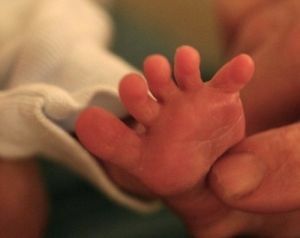 neuropathologists claim that such a reaction of the body is absolutely normal and passes independently over time.
neuropathologists claim that such a reaction of the body is absolutely normal and passes independently over time.
In the same case, if the reflex is diagnosed in a child whose age varies from 4 to 6 years, then in this case it is appropriate to talk about breaking the pyramidal path.
The reason for the presence of such a reflex at an early age of the child can be only genetic diseases that are associated with a disruption in the functioning of the central nervous system and the main neurons of the spinal cord, or point to the immaturity of the nervous system.
Study of symptom in adults
If a child has Babinsky's symptom before a certain age, he does not talk about the presence of health problems, but such manifestation of symptoms in an adult fully confirms the presence of neurological pathologies.
In an adult, the pathological reflex of Babinsky can only be manifested on one side and be two-sided. His presence proves that the connection between the sites of the spinal cord and brain is altered or broken.
This sign may exist for a certain period of time( for example, after epileptic seizures) or be permanent( then they speak of severe lesions in pyramidal ways).
In addition, the Babinsky reflex can be caused as a result of various neurological diseases and chronic ailments. Their list is great, but the following pathologies are particularly dangerous:
- Charcot's disease( affliction caused by neuronal damage and loss of their functions), the consequence of this disease is the development of paralysis and atrophy of all muscle groups;
- diagnosis of neoplasms in the brain;
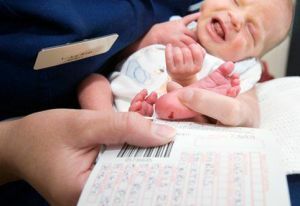
- genetic predisposition( in particular, Friedreich's ataxia);
- previously suffered head injuries;
- stroke;
- diagnosis of hepatic insufficiency and encephalopathy;
- is a chronic disease, the most dangerous is multiple sclerosis, it is during its course that the first symptom of the disease becomes Babinsky's symptom;
- negative complications of meningitis;
- anemia of malignant origin;
- is a viral infection( rabies);
- received back injuries;
- diagnosis of tumors in the spinal cord;
- tuberculosis, localized in the bones, spinal cord and spine;
- syndrome of syringomyelia.
Features of diagnosing
 Very often the patient does not suspect that he is sick of any disease.
Very often the patient does not suspect that he is sick of any disease.
In most cases, the presence of a negative or positive Babinsky reflex is reported by a neurologist when examined.
To diagnose abnormalities, the following procedures will most often be performed:
- laboratory tests of peripheral blood ;
- angiography ( study of structures and vessels of the brain);
- computed tomography or magnetic resonance tomogram ( for a thorough examination of the spine column);
- is a lumbar puncture with a study of cerebrospinal fluid.
Only on the basis of the results of diagnosis the specialist is able to diagnose and schedule further therapy. In each case, the treatment is strictly individual.
Of particular importance during the treatment period is the cause, which provoked the disease and the age of the patient himself.
The presence of the Babinsky reflex is manifested in violation of the integrity of the central motor neuron. With timely diagnosis and effective treatment in most cases, the ailment poses no danger. However, if the disease is neglected or detected too late, the chances of developing paralysis increase.


